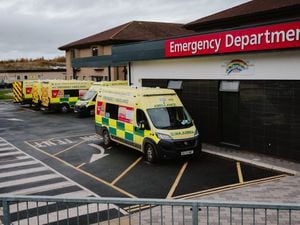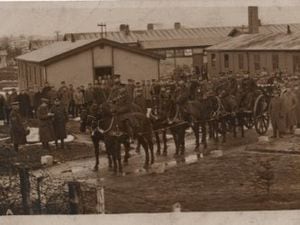Heart attack and stroke victims left waiting up to 21 hours for an ambulance
Patients that have suffered a stroke or heart attack in the West Midlands have been left waiting for up to 21 hours for an ambulance, new figures suggest.

Data collected by the Labour party from Freedom of Information requests shows patients across the country enduring long waits for ambulances to arrive or stuck outside hospitals waiting to be admitted to A&E.
The figures, collected in responses from half of ambulance trusts by the party, showed that in the North West in December a patient waited 65 hours, 38 minutes and 13 seconds for a response to a category 3 call.
Category 3 calls are those classified as urgent but not immediately life-threatening, with problems including a diabetes issue or requirement for pain control to relieve suffering. These calls should be reached within two hours in nine out of 10 cases.
But the data also showed that the longest waits for an ambulance following category 2 calls in the West Midlands and Yorkshire.
These calls include people who have suffered a heart attack and stroke, and patients have been left waiting over 21 hours for an ambulance for category 2 calls in the two regions when the target is just 18 minutes.
Meanwhile, also in December, the longest wait for a category 2 call in the East Midlands was more than 26 hours.
Other Freedom of Information data collected by Labour for 2022 showed that in the West Midlands, a patient had to wait 32 hours in the back of an ambulance before being admitted into hospital.
Elsewhere, one patient waited 40 hours in the back of an ambulance outside a hospital in the South West, while in the East of England there was an almost 36-hour wait.
Shadow health secretary Wes Streeting said: "Patients can no longer trust that an ambulance will reach them in an emergency.
"Stroke and heart attack victims are left waiting for hours, when every second counts."
NHS Providers chief executive Sir Julian Hartley added: "These figures are further evidence, were it needed, that last winter was one of the toughest on record for the NHS.
"Trust leaders will be very concerned by these wait times as ensuring timely, high-quality care for patients is their top priority.
"The causes of long ambulance waits are complex. High demand - always at its worst in winter - along with overstretched capacity and vast workforce shortages all contribute.
"Trust leaders are working extremely hard to recover urgent and emergency care services and develop community and mental health support to ensure patients can access the care they need swiftly in the right setting. However, they desperately need action on a national level to help tackle these problems.
"The Government's promised long-term workforce plan, which must be fully funded and costed, should help address these issues. It cannot come a minute too soon."
NHS England data shows that, on average, people waiting for a response to a category 2 call in December waited one hour, 32 minutes and 54 seconds.
Some 36,000 category 2 patients overall waited more than three-and-a-half hours in December for ambulances, the data showed.
There was a big improvement in January, to an average response time of 39 minutes and 33 seconds. However, this was still above the 18-minute target.
Meanwhile, from December 1 to February 28, some 129,023 people waited more than an hour in ambulances outside hospitals.
Mr Streeting said: "This is the terrifying reality after 13 years of Conservative understaffing of our NHS.
"Patients should be able to phone 999, safe in the knowledge that they will get an answer and an ambulance when they need it. The longer we give the Conservatives in office, the longer patients will wait.
"Labour will launch the biggest expansion of the NHS workforce in history, training the staff needed to reach patients on time, paid for by abolishing the non-dom tax status. We will ensure the NHS is there for us when we need it once again."
A spokesperson for West Midlands Ambulance Service said the situation has been improving since the start of the year.
She said: “Sadly, last winter, we saw some patients wait a very long time for ambulances to arrive as a result of long hospital handover delays. The pressures in health and social care meant that when our crews arrived at A&E they were unable to handover patients to hospital staff and therefore couldn’t respond to the next patient in the community.
“There has been a significant improvement since the turn of the year with delays reduced at hospitals across the region, which has allowed ambulances to get to patients more quickly than we have seen for many months. Indeed, the delays in April look set to be smallest since May 2021.
“The trust has worked exceptionally hard to find solutions until hospital delays reduce back to pre-pandemic levels. We will continue to work with partners to find new and innovative ways to help turn ambulances around as quickly as possible, allowing us to respond to patients more quickly.”





